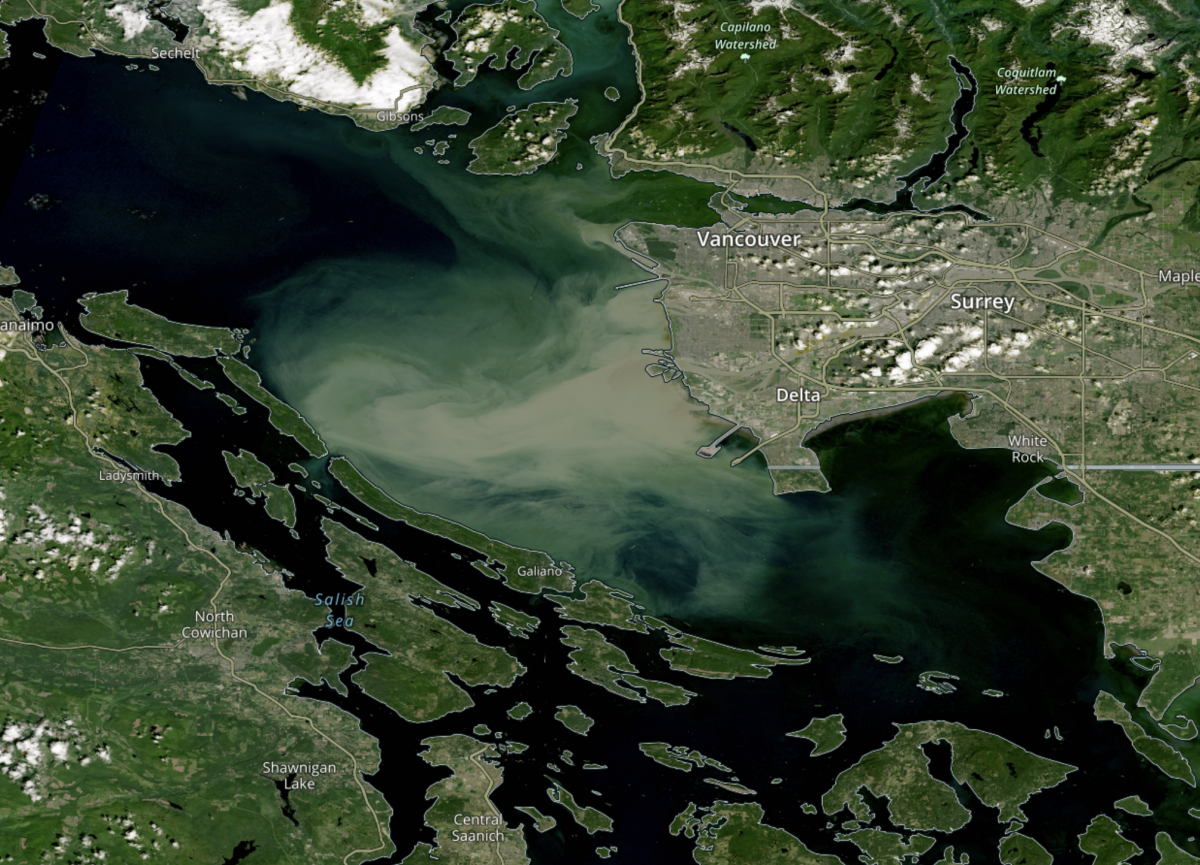What are we doing?
As oceanographers, we are interested in understanding where floating things in the ocean (which includes fresh water from rivers) actually go.
For example, in the Strait of Georgia, an enormous amount of fresh water is brought in by the Fraser River (some 2000 m3/s in winter low-flow periods, and more than 10000 m3/sec in June and July during the peak runoff period). This fresh water then mixes with the salty ocean water in the Strait, and EVENTUALLY flows out into the Pacific Ocean, mostly (we think) past Victoria and down Juan de Fuca Strait. Along the way, this fresh(er) water outflow also takes with it all of dissolved substances that are already in the Fraser – agricultural nutrients, discharged sewage, sediment, and other things like logs.

But how exactly does this fresh water get to the Pacific? And how long does this take? And what about all the logs washed up on beaches? We already know that the surface water in the Strait of Georgia is moved around by the wind and tide, but what we don’t know is just how important these factors might be overall in setting the actual circulation.
Unfortunately, we have no way of knowing what the surface currents are over the entire Strait (although a specialized radar system measures surface currents near the mouth of the Fraser, and operational forecast models that may provide useful predictions are also under development). Directly measuring the currents at the surface from ships is difficult, time-consuming, and very expensive. But we are not actually interested in the currents anyway – we want to know where water parcels go. So why not track them directly?
One way of doing this is by releasing driftcards. These are basically small pieces of wood with a message that asks the finder to report where and when they found them. But you don’t get them all back, and the ones you do get back are the ones the end up on land (which means you only find them in places people walk along beaches).
Instead, we are approaching this problem by releasing a smaller number of TRACKED drifters. As these make their way to wherever they go, we get a continuous track of their location through a satellite telemetry system. From this track we can determine how fast as well as how far they go, and learn a lot more about turbulence in the circulation in the Strait as well.
Results
A first description of the results of this work (so far) is contained in the following publications:
- Pawlowicz, Hannah, and Rosenberger, Lagrangian observations of estuarine residence times, dispersion, and trapping in the Salish Sea, Estuarine, Coastal and Shelf Science 225 (2019) 10.1016/j.ecss.2019.106246
- Pawlowicz, 2021, The Grounding of Floating Objects in a Marginal Sea, J. Physical Oceanography, https://doi.org/10.1175/JPO-D-20-0183.1 51, 537-551.
- Mason, E. Fractal analysis of coastal drifter trajectories, M.Sc. thesis, University of British Columbia, https://doi.org/10.14288/1.0421276
- S. W. Stevens, R. Pawlowicz, Swish floats: an inexpensive neutrally buoyant float to monitor dispersion in coastal seas, J. Atmospheric and Oceanic Technology, 2023, https://doi.org/10.1175/JTECH-D-23-0045.1
- R. Pawlowicz, C. Chavanne, and D.Dumont, 2024, The Water-Following Performance of Various Lagrangian Surface Drifters Measured in a Dye Release Experiment, J. Atmospheric and Oceanic Technology, 41, 45-63, https://doi.org/10.1175/JTECH-D-23-0073.1
- S. Stevens, R. Pawlowicz, T. Tanhua, L. Gerke, W. A. Nesbitt, A. Drozdowski, J, Chasse and D.W.R. Wallace, 2024, Deep inflow transport and dispersion in the Gulf of St. Lawrence revealed by a tracer release experiment, Communications Earth and Environment 5, 338, https://doi.org/10.1038/s43247-024-01505-5\
